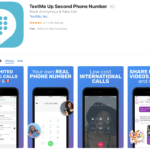Zone7 raises $2.5 million seed round to predict injury risk for athletes
Zone7, the company using data and analytics to identify the potential for injuries with athletes, has raised $2.5 million in seed funding.
The company monitors athletes’ performance to determine when they need to be rested to avoid the potential for career-threatening injuries.
The company’s technology has managed to attract investors including Resolute Ventures, UpWest, Amicus Capital, Dave Pell, PLG Ventures, along with athletes like National Basketball Association star Kristaps Porzingis.
Teams in the MLB, La Liga, Champions League, MLS, collegiate athletic departments and Olympic teams are all using the company’s technology, according to a statement.
“Getting injured is one of the worst experiences for any athlete,” said Porzingis, in a statement. “The technology behind Zone7 is extremely impressive and has the potential to change the landscape of sports forever.”
Zone7 uses pattern recognition based on an athlete’s past performance and medical history to determine what course of action is best for the player to ensure that they don’t get hurt. So far, the company says it has achieved a 95 percent accuracy rate when it comes to predicting injuries and reduced the potential for injuries by 75 percent, according to a statement.
“Injuries in professional sports cost billions annually, but in the era of big data it doesn’t have to be that way,” said Tal Brown, co-founder and CEO of Zone7. “Professional sports franchises have massive amounts of untapped health and performance data that, when unlocked by AI, can become one of a team’s most valuable assets. By better understanding every athlete’s breaking points and implementing personalized intervention plans to prevent injuries before they occur, teams no longer have to accept injuries as an inevitability.”
Founded by Tal Brown and Eyal Eliakim, two Israelis who served in the military’s elite technology division called the 8200, Zone7’s executive team has years of experience working with Salesforce on the development of its Einstein product and with professional soccer franchises in Israel.
“Professional sports is, for the most part, slow to embrace medical and performance data, and as such, this has historically been a difficult target market to break into. Tal and Eyal have built a compelling product that is making teams stand up and take notice. It’s literally a game changer,” said Raanan Bar-Cohen, general partner at Resolute Ventures, in a statement. “The fact that Zone7 is the first company to show injuries can be avoided by using artificial intelligence, makes us extremely excited to partner with the Zone7 team.”
Powered by WPeMatico
Polis, the door-to-door marketer, raises another $2.5 million
Polis founder Kendall Tucker began her professional life as a campaign organizer in local Democratic politics, but — seeing an opportunity in her one-on-one conversations with everyday folks — has built a business taking that shoe leather approach to political campaigns to the business world.
Now the company she founded to test her thesis that Americans would welcome back the return of the door-to-door salesperson three years ago is $2.5 million richer thanks to a new round of financing from Initialized Capital (the fund founded by Garry Tan and Reddit co-founder Alexis Ohanian) and Semil Shah’s Haystack.vc.
The Boston-based company currently straddles the line between political organizing tool and new marketing platform — a situation that even its founder admits is tenuous at the moment.
That tension is only exacerbated by the fact that the company is coming off one of its biggest political campaign seasons. Helping to power the get-out-the-vote initiative for Senatorial candidate Beto O’Rourke in Texas, Polis’ software managed the campaign’s outreach effort to 3 million voters across the state.
However, politically focused software and services businesses are risky. Earlier this year the Sean Parker-backed Brigade shut down and there are rumblings that other startups targeting political action may follow suit.
“Essentially, we got really excited about going into the corporate space because online has gotten so nasty,” says Tucker. “And, at the end of the day, digital advertising isn’t as effective as it once was.”
Customer acquisition costs in the digital ad space are rising. For companies like NRG Energy and Inspire Energy (both Polis clients), the cost of acquisitions online can be as much as $300 per person.
Polis helps identify which doors for salespeople to target and works with companies to identify the scripts that are most persuasive for consumers, according to Tucker. The company also monitors for sales success and helps manage the process so customers aren’t getting too many house calls from persistent sales people.
“We do everything through the conversation at the door,” says Tucker. “We do targeting and we do script curation (everything from what script do you use and when do you branch out of scripts) and we have an open API so they can push that out and they run with it through the rest of their marketing.”
Powered by WPeMatico
For a monthly subscription fee, this startup will send out customized gifts to current and prospective clients at scale
In today’s noisy, fast-paced world, finding a way to let clients and potential customers know that they are top of mind can be a major challenge for companies.
Enter Sendoso, a 2.5-year-old, San Francisco-based online-to-offline startup that promises to source, store and ship anything a business ever needs to send — and track its return on investment, to boot.
How does it work? According to CEO and co-founder Kris Rudeegraap, Sendoso, founded in 2016, already has 110 full-time employees, hundreds of vendor relationships and six warehouses, including its biggest, an 80,000-square-foot space in Las Vegas.
It also has relationships with dozens of workers on whom it can call to help it as it needs them and, as crucially, it integrates with Salesforce, Marketo and Engagio, among other platforms where companies largely live.
Collectively, these various pieces enable an employee to log into Sendoso and — according to a budget that has been preset — click on a contact, type out a customer message and choose a gift if desired, and that directive will show up as a campaign on the company’s end and as an order over at Sendoso, which then gets to work.
Want to send cupcakes to a client in New York? Done. A handwritten note to a prospect in Washington? No problem. See something on Amazon? Sendoso will have it sent to one of its warehouses, then repackage it so that it looks like you did it yourself. Then out the door it goes with a major carrier like FedEx or UPS.
Sendoso — which charges a monthly subscription fee for its services based on a company’s number of users and its sending volume — caters to both tech startups as well as Fortune 1,000 companies, with a client list that includes the marketing data company LiveRamp, the construction management software company ProCore and the call center platform TalkDesk, where Rudeegraap was most recently a senior account executive — and where he says the idea for Sendoso was born.
“Having worked in sales for 10 years, it was clear that customer success was shifting away from this dependence on email because of the digital noise being created.” He sensed that a channel with offline gifts like wine and handcrafted notes (penned by Sendoso warehouse workers) might be the solution.
The idea of business-to-business gifting is far from new, of course, and even though Sendoso is customizing the experience, it also isn’t alone, with other upstarts like Knack in Seattle and Alyce in Boston among many others focused on power gifting.
Still, investors like Sendoso’s packaging, so to speak. Indeed, Rudeegraap tells us the company just closed on $10.7 million in Series A funding to bolster its ranks and accelerate its reach beyond the 15 countries where the service is already available. The round was led by David Sack’s Craft Ventures, with participation from Signia Partners, Storm Ventures, Struck Capital and Hack VC.
Sendoso has now raised $13.2 million to date.
Powered by WPeMatico
Energizer’s P18K Pop is basically a giant battery with a smartphone built into it
This is the future you asked for.
When people read smartphone reviews, one of the first things they want to know is whether the battery life is going to be sufficient for their use cases. Well, what if the battery life was the only stat that mattered?
At MWC in Barcelona, phone maker Avenir Telecom is turning heads with an Energizer-branded behemoth that packs a punch.
The P18K Pop has a truly massive 18,000 mAh battery built-in — the manufacturer says you could play videos for two straight days without depleting the battery. By comparison, the phone in your pocket probably has a battery in the 2,500-3,500 mAh range, so this thing would likely be able to keep you going for several days with regular usage.
for some how this thing is called a smartphone
and i thought the #SamsungFold was THICK#energizer Power Max P18K Pop with 18000 mAh
3 to 4 cm sickness!! pic.twitter.com/tc24X3MOVz— ahtk (@AHTK250) February 26, 2019
Consumers haven’t always been psyched about manufacturer’s never-ending desire to trim thickness from their phones; that’s not an issue with the P18K Pop, which is 18mm thick at its thinnest point. Hilariously, the thing is thick as hell but manages to not have a headphone jack.
It is abundantly unclear how big the market is for this chunkster, but Paris-based Avenir Telecom says they will start shipping them to customers sometime this summer.
Powered by WPeMatico
Sapling, an employee management and on-boarding platform, lands $4 million in seed funding
Sapling, a three-year-old, San Francisco-based company whose employee management and onboarding software is being adopted by a small but growing number of mid-size companies with far-flung workforces, is announcing today that it has raised $4 million in funding from Gradient Ventures, which is Google’s AI fund, and Tuesday Capital, formerly known as CrunchFund.
It quietly secured the funding several months ago and has been using it to ramp up to the 50 people it currently employs.
The company’s founding team is the kind that investors like to see, meaning that in many ways, their previous work experiences led them to start Sapling .
Co-founder and CEO Bart Macdonald has spent his entire career in HR, working most recently in Melbourne, Australia, as a regional director for the global coding school General Assembly, where he hired and managed a 10-person marketing, sales and operations team.
Meanwhile, co-founder Andy Crebar (born in the same Sydney hospital as Macdonald, a day later) also knows the plight of individuals trying to seamlessly onboard new hires, having worked most recently on business development initiatives at a fintech startup called Credible Labs, where adding headcount was, as at many companies, a point of frustration.
“I liked that Bart and Andy had lived through their own experiences dealing with crappy HR software in previous positions and thus really understood how customers view the problem,” says Tuesday Capital co-founder Pat Gallagher. “The fact that neither are technical would have been an issue if we were investing pre product, but by the time we invested, they had proven they could build software that their customers loved.”
In fact, says Gallagher, his team was drawn to Sapling specifically because a handful of the firm’s portfolio companies has been using its onboarding software and “really raving about it. It’s hard to find HR software that people really like, so that was a big positive for us and helped cut through the noise of the space that they operate in.”
So what’s so special about Sapling? Mostly, it seems, its approach brings together the tools and software that HR execs are already using, including ADP for payroll, or G Suite for productivity, and Lever for recruiting, integrations that also employ a heavy dose of AI to anticipate the behaviors of employees, making it easier for managers to recruit, aid, manage and support current and future staffers.
As Macdonald explains it on the simplest level, Sapling not only provisions software for them but it connects their tools “so they don’t have to open 10 tabs. All they have to do is run their workflow inside of Sapling so that, for example, an employee can ask for time off in Slack,” and that request will automatically be reflected in the employer’s payroll and benefits systems (once approved).
Sapling currently works with companies with anywhere from 100 to 1,500 employees, including InVision, an eight-year-old commercial platform used by design teams to create digital products for mobile and desktop that is currently investing its Series F round. InVision, which has a large distributed workforce, says Sapling has saved the company 1,000 hours by speeding up communications and making employee engagement far more seamless.
What comes next for Sapling remains to be seen. It’s in an awfully crowded category, with no shortage of all-in-one HR solutions attracting venture capital. In the meantime, with low unemployment creating headaches for many outfits looking to keep its talent, Sapling is smartly positioning itself as an important tool in specifically helping companies with geographically distributed teams to retain and engage employees. Customers like InVision, along with Digital Ocean, KPMG and Kayak, say it’s working, too.
Above, left to right: founders Bart Macdonald and Andy Crebar, courtesy of Sapling.
Powered by WPeMatico
Search marketing company Botify raises $20M
Botify, a search engine optimization company that works with customers like Expedia and Nike, announced today that it has raised $20 million in Series B funding.
Co-founder and CEO Adrien Menard said that the opportunity in SEO is “even bigger now than in the past,” and that the problem is a much broader problem than many realize.
“Most people think about SEO in terms of keyword optimization, but more than 50 percent of the pages in large websites are not being indexed,” he said. So Botify can identify which pages aren’t being crawled by Google and make recommendations on how to better organize content.
Over time, Botify has also launched a keyword product, as well as tools like a JavaScript crawler and mobile versus desktop analysis. Menard said the company now offers a platform designed for “optimization of every stage of the search process.”
The new funding was led by France’s Idinvest Partners, with participation from Ventech. Botify has now raised a total of $27 million.
The company was founded in France, launching in the United States after taking the stage at TechCrunch’s Disrupt NY conference in 2016. Next, it’s opening what it calls a “second U.S. headquarters” in Seattle (the first is in New York City), which Menard said will mostly provide sales and support for West Coast customers.
In addition to announcing the funding and the new office, Botify has also grown its leadership team, with the hiring of Christophe Frenet as senior vice president of product and Rachel Meranus as chief marketing officer, as well as the addition of Neolane co-founder Stephane Dehoche and former BuzzFeed president Greg Coleman to its board of directors.
Powered by WPeMatico
Virtual phone number apps are gaming the App Store with duplicates
If you’ve searched the App Store for an app to get a second phone number, chances are you found dozens of apps with very little differences. A handful of companies are spamming the App Store with duplicated apps. This strategy is against Apple’s rules.
The App Store Review Guidelines are detailed rules that define what you can and cannot do on the App Store. As soon as you sign up for a developer account and submit an app to the App Store review team, you agree to comply with those rules. It’s a long document, but rule 4.3 titled “Spam” is straightforward:
Don’t create multiple Bundle IDs of the same app. If your app has different versions for specific locations, sports teams, universities, etc., consider submitting a single app and provide the variations using in-app purchase. Also avoid piling on to a category that is already saturated; the App Store has enough fart, burp, flashlight, and Kama Sutra apps already. Spamming the store may lead to your removal from the Developer Program.
A tipster looked at a specific category in the App Store — VoIP apps that let you get a second phone number and send and receive calls and texts from that new number. I looked at that category myself, and here are the results of my investigation.
Companies don’t even try to hide the fact that have submitted multiple versions of the same app with different names and icons. But core features remain the same. Apple hasn’t enforced its own guideline properly and developers took advantage of that grey area.
Example 1: TextMe
As you can see on the company’s website, TextMe currently operates three apps and is open about it — TextMe Up, TextMe and FreeTone. These three apps all have an average of 4.7 stars in the App Store with hundreds of thousands of reviews in total.
The wording is slightly different for each app. TextMe Up lets you “call & text anyone in the world from your mobile, tablet, and computer,” while TextMe lets you “get a new phone number and start texting and making calls for free” and FreeTone is all about “[enjoying] free calls & texts to the phone numbers in the US and Canada.”
But if you look at the App Store screenshots, the company doesn’t even bother changing the screenshots or marketing copy.
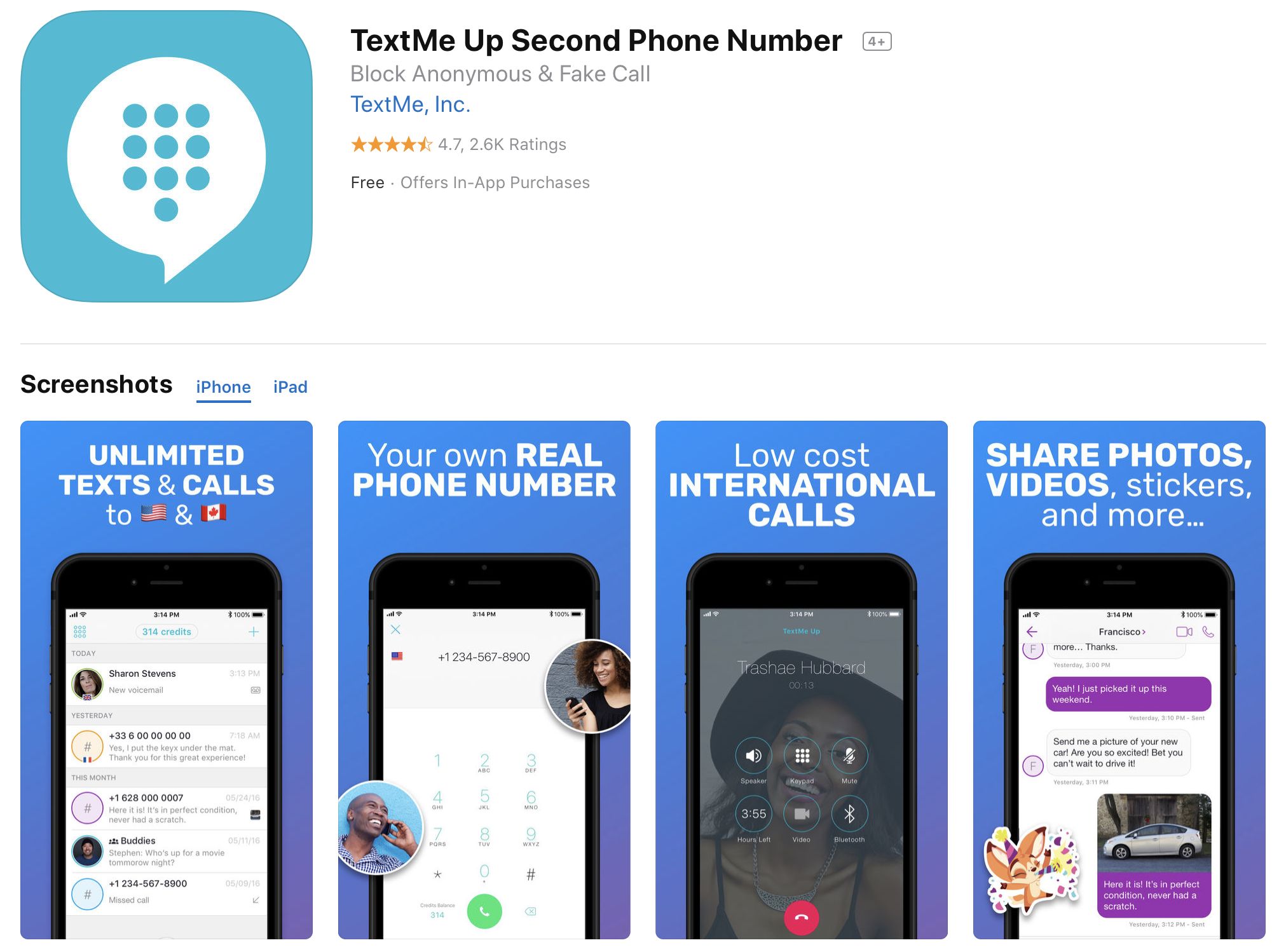
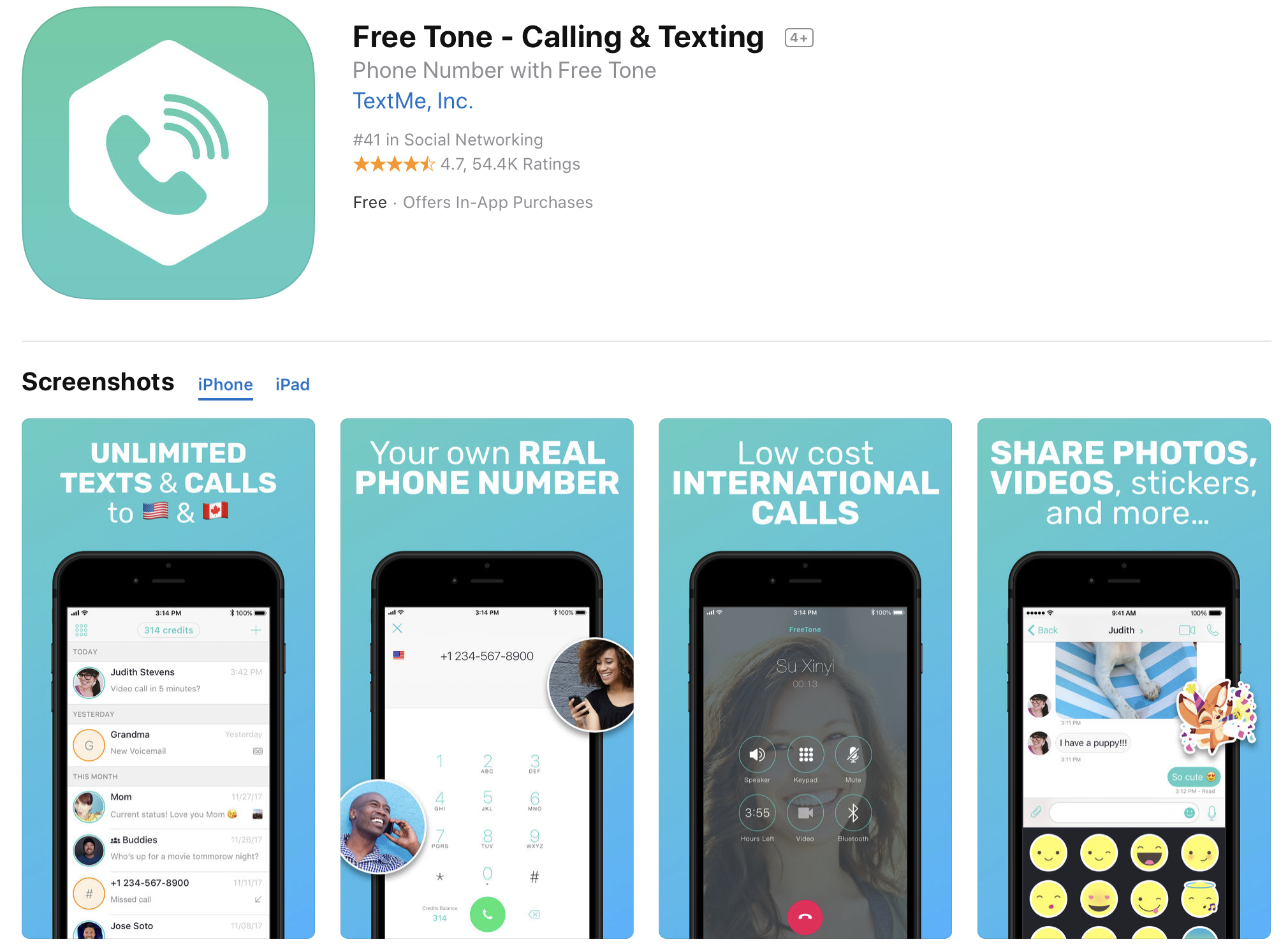
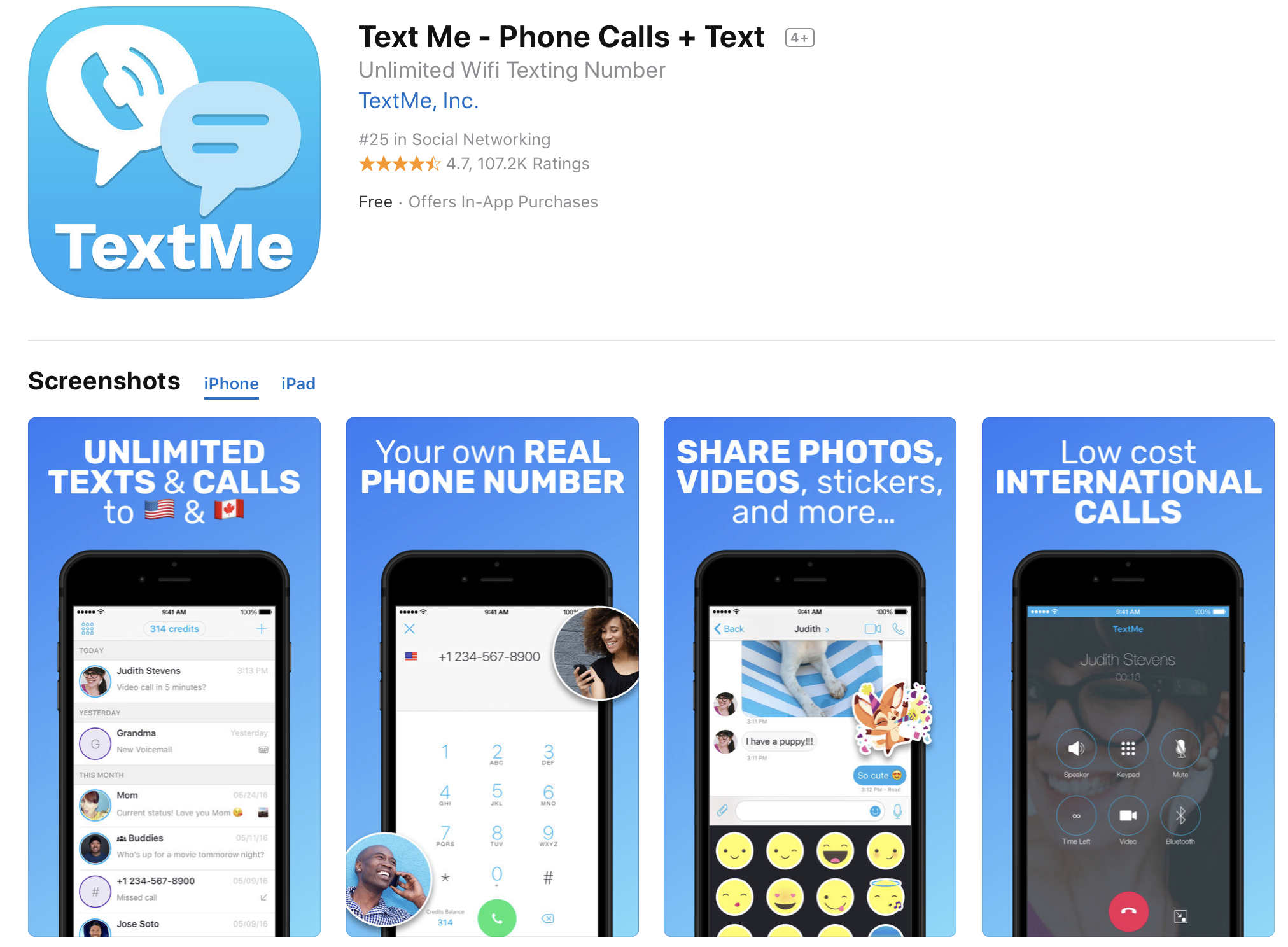
“Our apps have a different marketing target,” TextMe, Inc. co-founder and co-CEO Patrice Giami told me in a phone interview. “They share the same code base, but we can activate or deactivate some features in order to differentiate the apps. We manage that depending on the competitive environment and if we need to optimize distribution.”
Giami also believes that his company complies with the App Store guidelines. “Apple is doing a very systematic review — we’re constantly scrutinized because we release a lot of app updates. We’ve never been flagged or contacted by Apple — they’ve never said that we’re releasing complete clones of the same app,” he said.
TextMe uses the same developer account for its three apps, Text Me, Inc. Apple could easily compare those apps if it wanted to.
Example 2: BinaryPattern and Flexible Numbers LLC
This case is a bit more sophisticated. The company behind these apps has two different developer accounts and tried to differentiate its App Store listings a bit. Similarly, buttons and colors vary slightly from one app to another, but it’s the same feature set.
Here are a few screenshots I took:
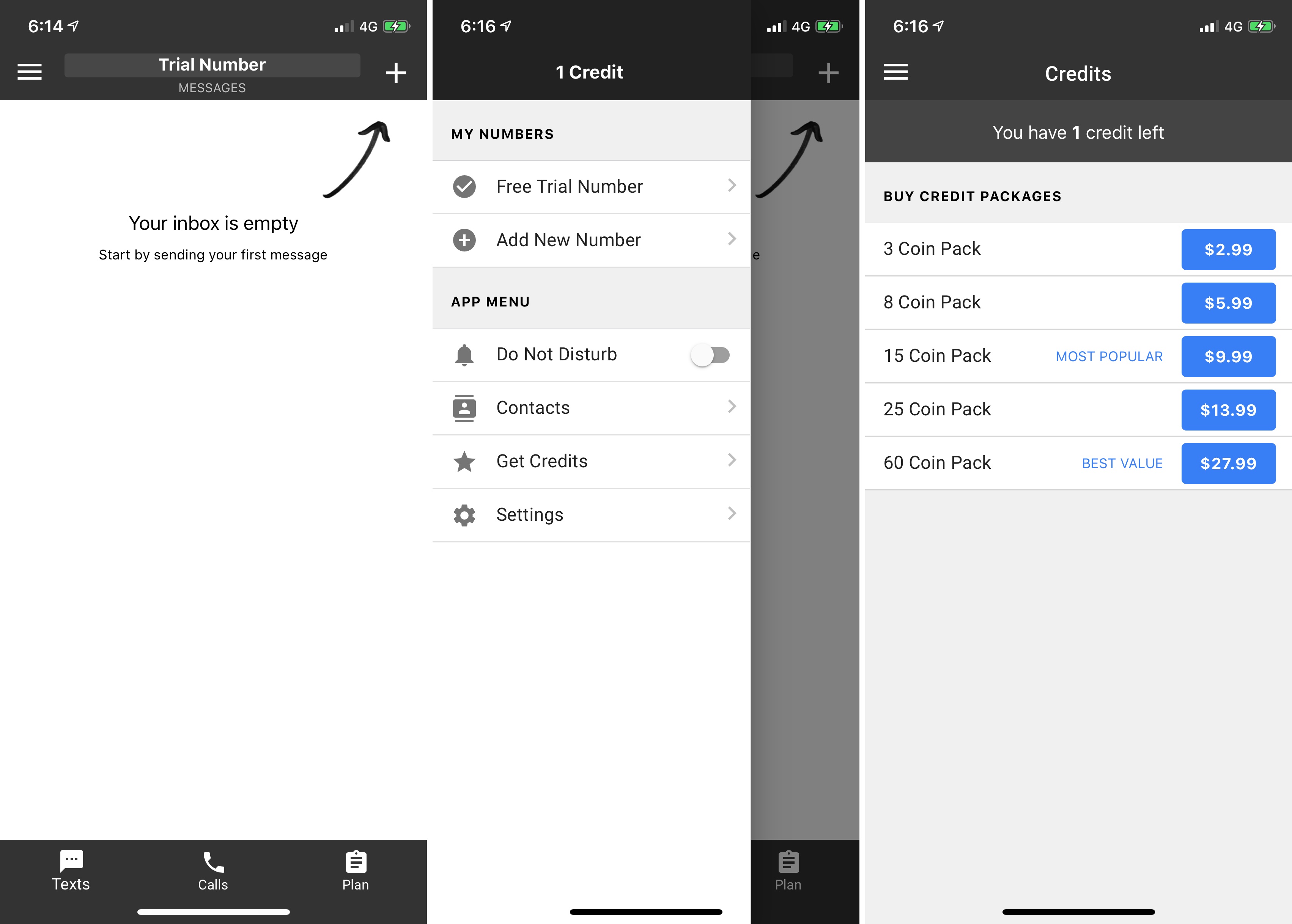
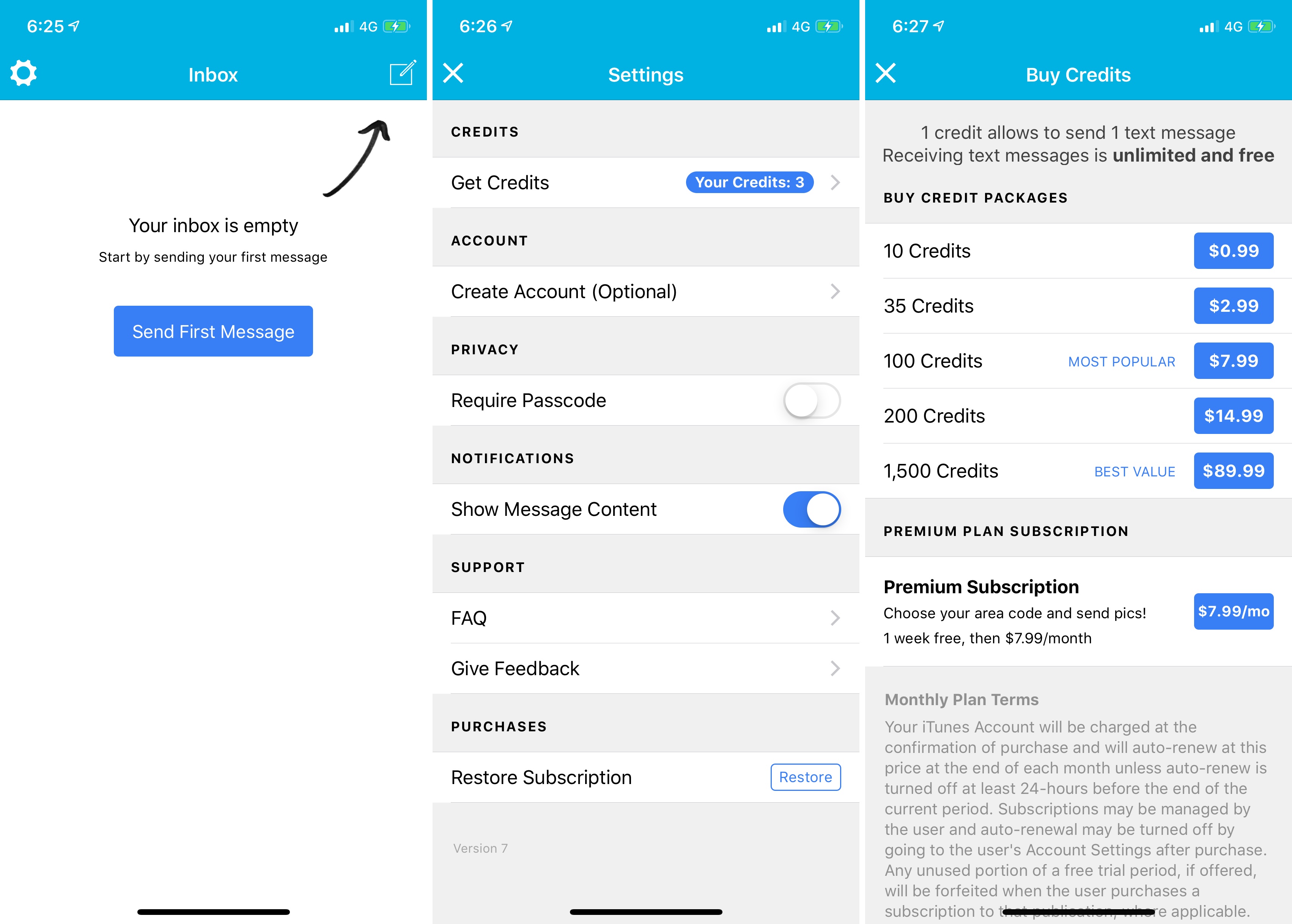
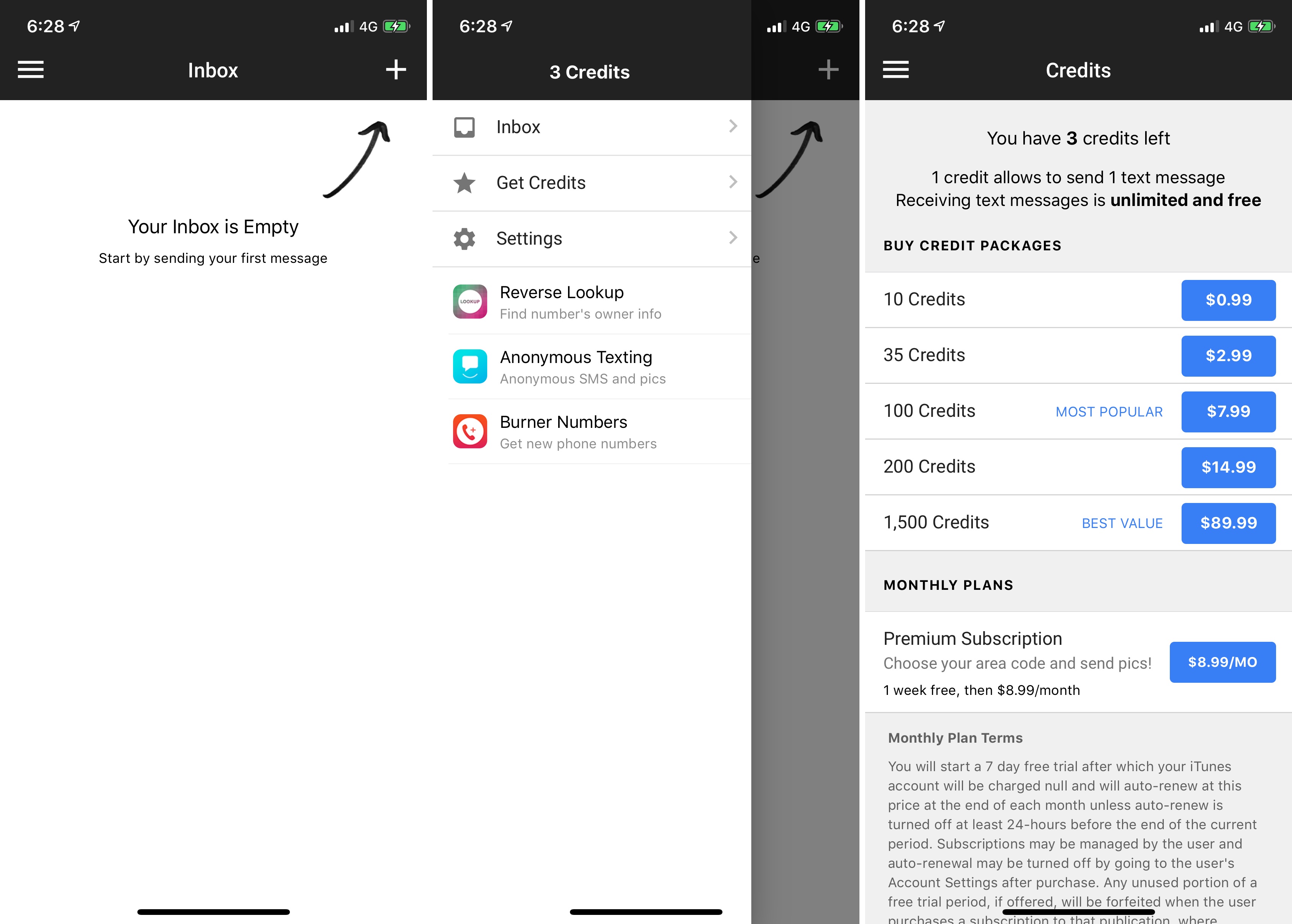
Burner Phone Numbers SMS/Calls
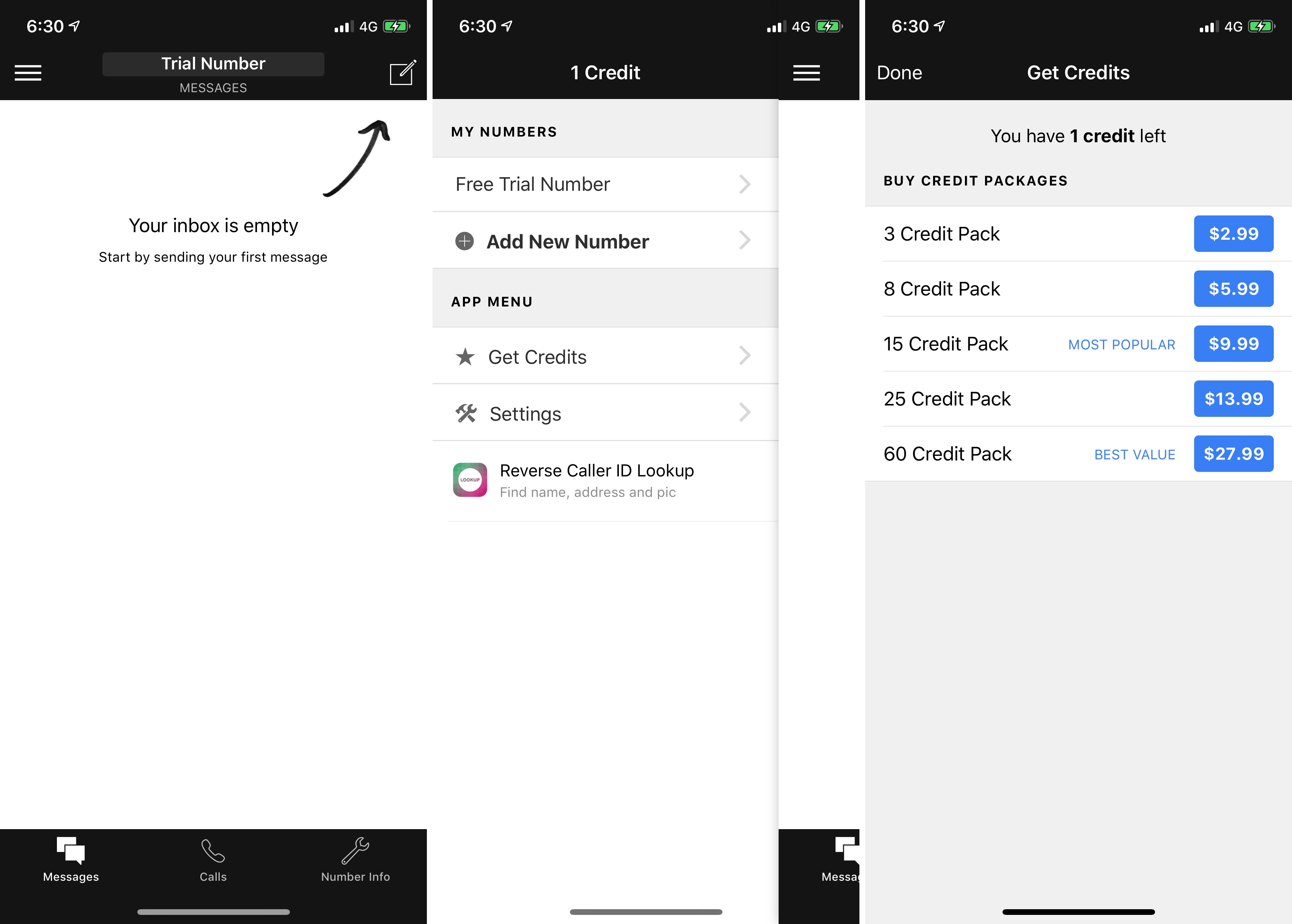
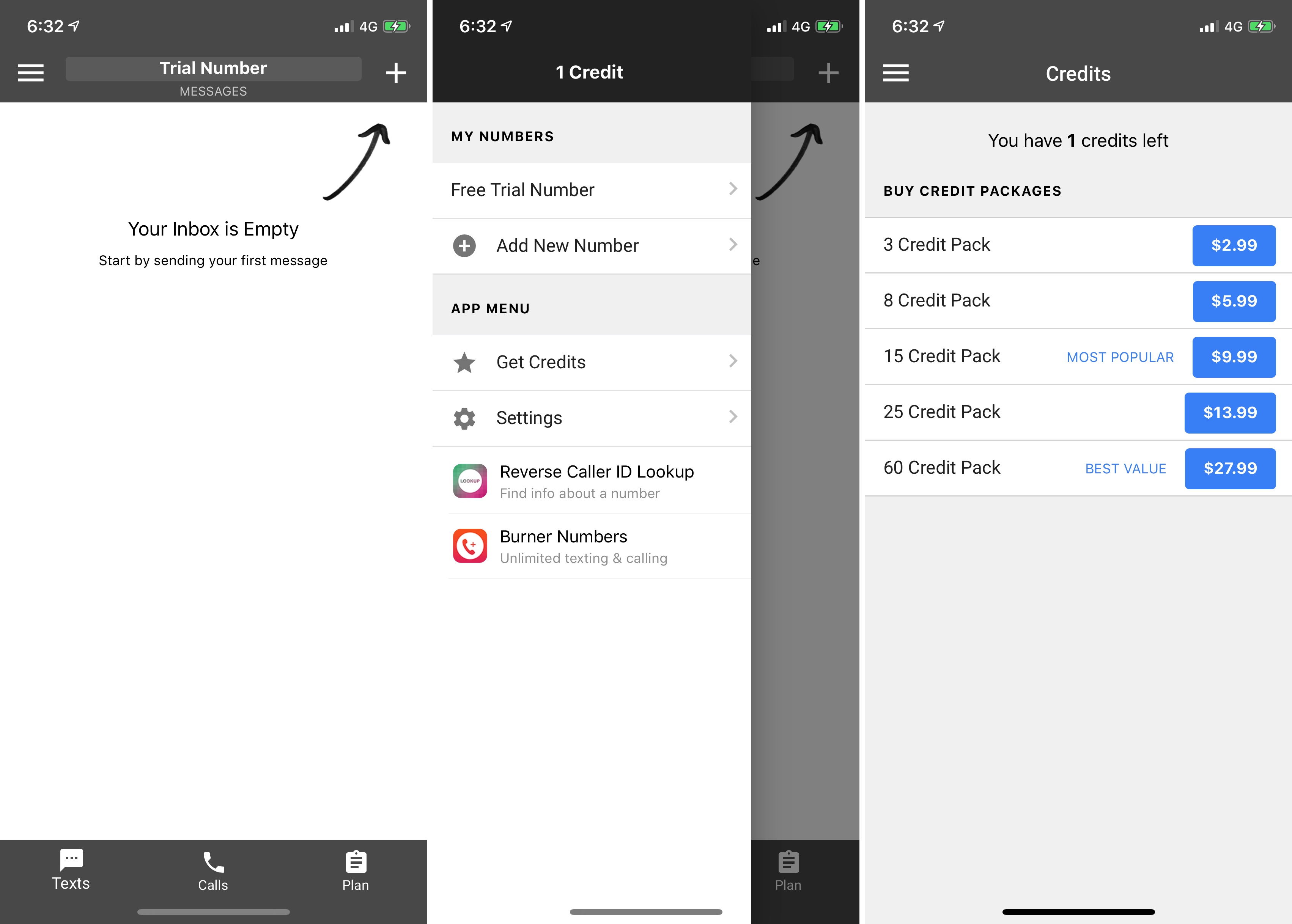
I’ve reached out to BinaryPattern/Flexible Numbers and haven’t heard back.
Example 3: Appsverse Inc.
This time, Phoner, Second Line and Text Burner all share the same developer account. Even though these apps let you do the same thing, Appsverse has released its app in three different App Store categories — utilities, productivity and social networking.
By doing that, the company’s apps appear in multiple categories. Text Burner is No. 88 in social networking, Second Line is No. 74 in productivity and Phoner is No. 106 in utilities.
It seems a bit counterintuitive as Appsverse splits their downloads between multiple apps. But I believe the main reason the company is releasing multiple apps is for keyword optimization and App Store search results. It then picks a different category for each app, but it’s a side effect.
Appsverse sent me the following statement:
The guideline promotes a healthy App Store ecosystem that is good for both developers and users. It prevents proliferation of similar apps that does not have a differentiation in business model, features, use cases and demographic appeal.

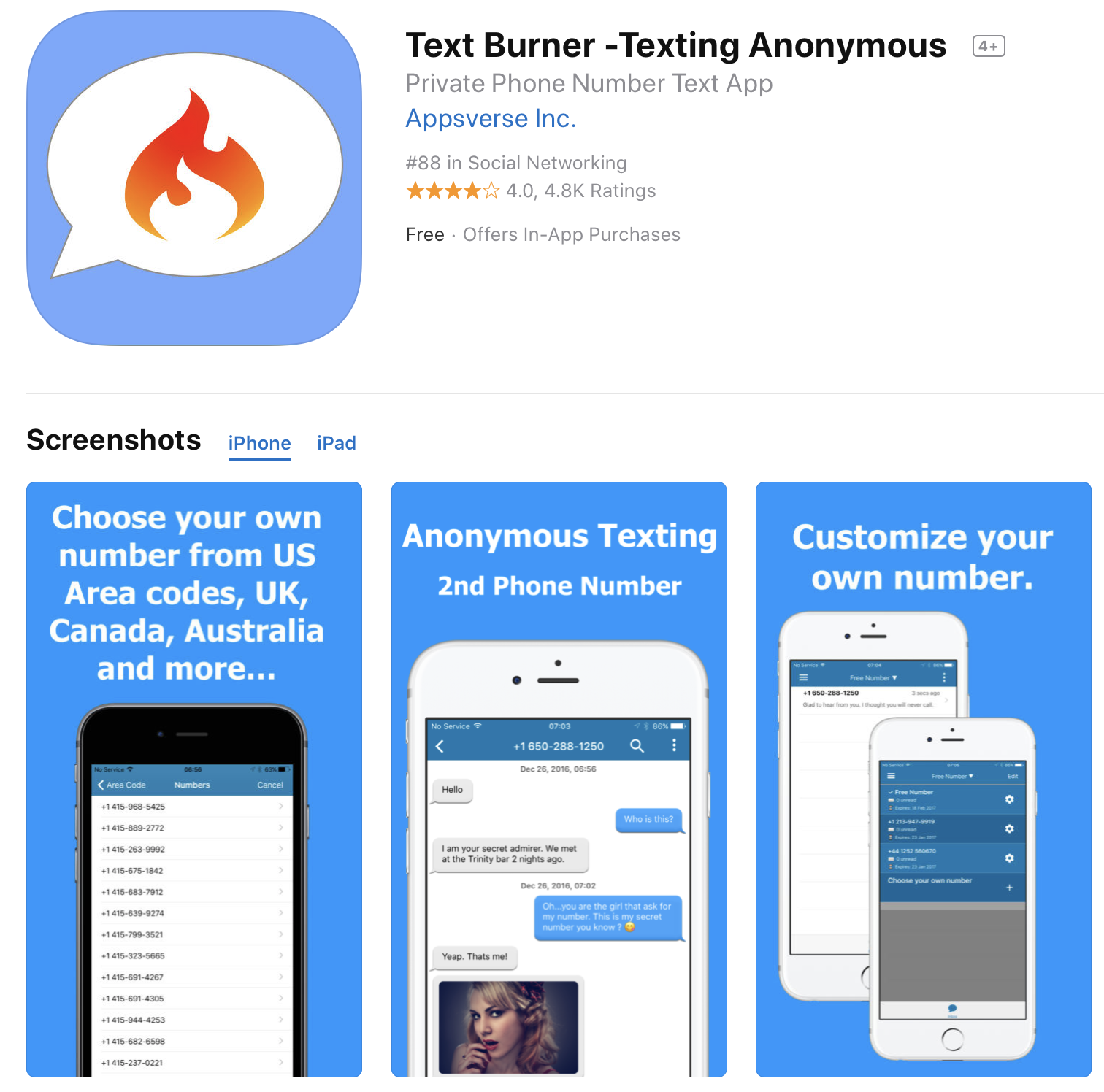
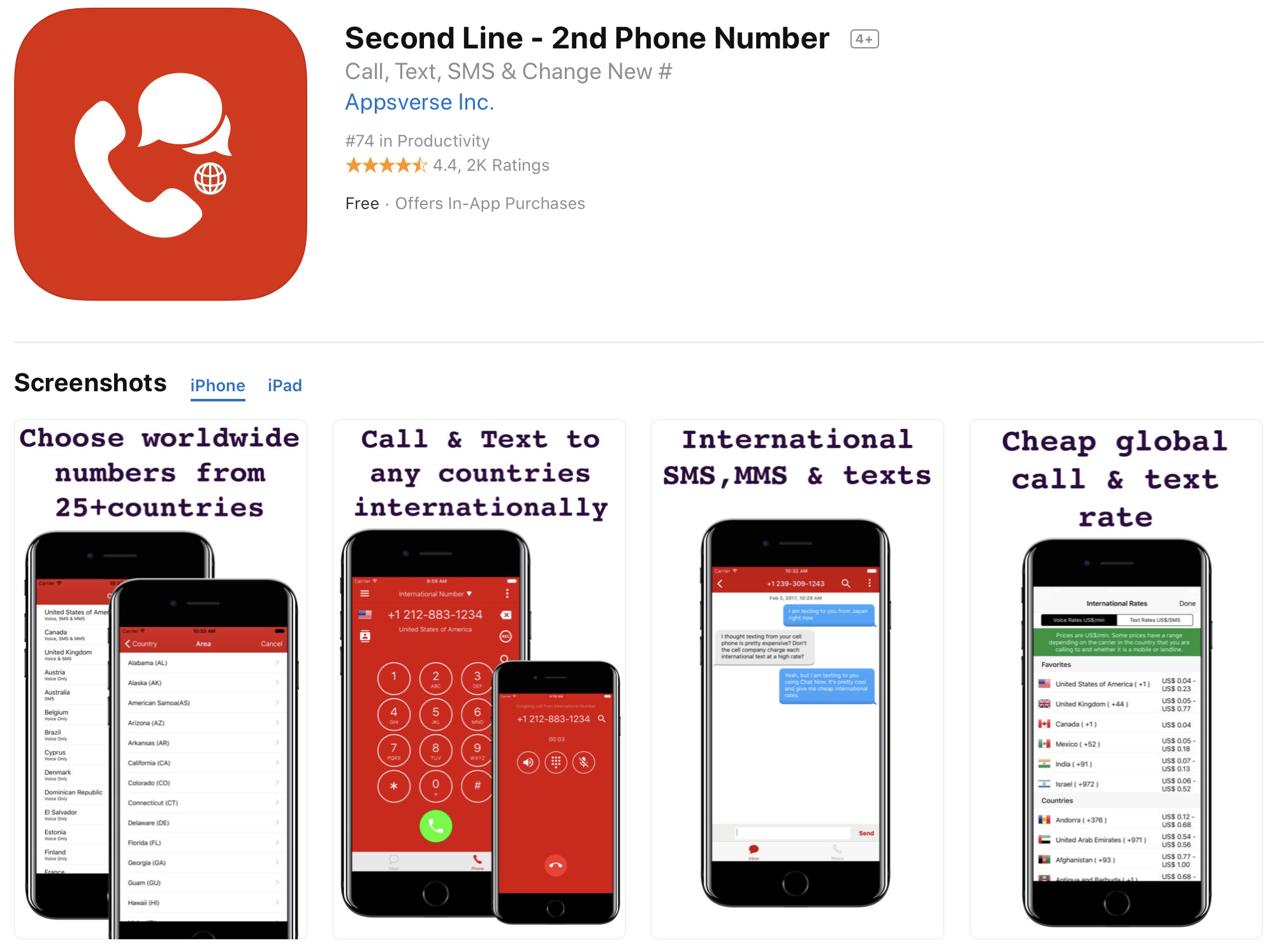
Example 4: Telos Mobile and Dingtone Inc.
On paper, Dingtone and Telos look like two different apps from two different companies. I downloaded the Dingtone app and signed up with my email address. I then downloaded the Telos app and signed up with the same email address. Here’s the message I got:
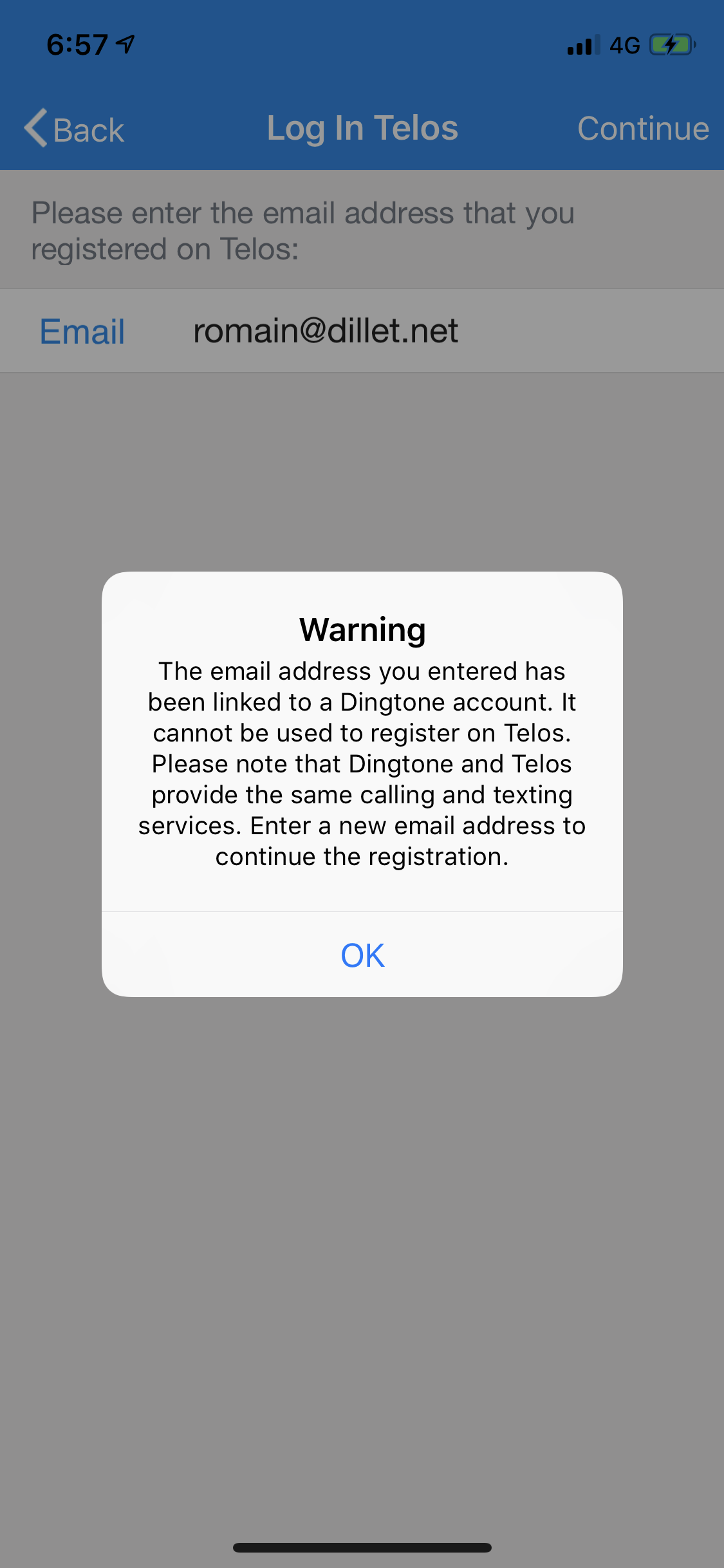
I’ve reached out to Telos/Dingtone and haven’t heard back.
A level playing field
These companies haven’t done anything illegal. They took advantage of Apple’s lack of oversight on an App Store rule. Releasing multiple versions of the same app is a great App Store optimization strategy. This way, you can pick a different name, different keywords and different categories. Chances are potential customers are going to see your app in their App Store search results.
While Apple is usually quite strict when it comes to App Store guidelines, it hasn’t enforced some of them. And this is unfair for app developers who play by the rules. They can’t compete as effectively with companies that know that they can ignore some rules.
Powered by WPeMatico
Gradient Ventures, Google’s AI fund, leads $7M investment in English learning app Elsa
Google’s Gradient Ventures, the search giant’s dedicated AI fund, is casting its eye to Asia after it led a $7 million Series A round for Elsa, a startup that operates an app for English language learners.
The deal is Gradient’s first in Asia, and it includes participation from existing investors Monk’s Hill Ventures and SOSV. Elsa has now raised $12 million to date.
Elsa was founded in 2015 as a way to help non-English speakers improve their accent and general speaking ability. Vu Van, CEO and one half of the founding team, is a Vietnamese national who, despite being fluent in English, struggled to be understood after moving to the U.S. to study and then work. Together with speech recognition researcher Dr. Xavier Anguera — the startup’s CTO who leads its Portugal-based tech team — Van started Elsa to help people in the same predicament.
“I was very good at grammar, reading and writing but I realized people had a hard time understanding me because I had a very strong accent and my pronunciation wasn’t proper,” Van, who is based in San Francisco but travels extensively, told TechCrunch in an interview. “This impacts confidence when you apply for jobs or are even just meeting friends.”
“There are so many English learning solutions but they are mostly focused on expanding vocabulary or grammar, very few deal with pronunciation,” she added.
Elsa uses voice recognition and AI to grade a user’s speaking versus standard American English (and I thought us Brits were the global standard…) giving them a score at the end. That helps track their progress, while it focuses on pronunciation with a detailed review on how a user is speaking.
The service uses a freemium model that grants users full access to 1,000 courses for around $3-6 per month depending on the length of the package they select. That ranges from one month of access to 12 months. New content is added every week, Van said.

With this money in the bag, Elsa is going after growth in a number of its most promising markets.
The service has users in more than 100 countries, but Vietnam is its top market, with two million paying users. Partly because it is Van’s home market, Elsa has doubled down on Vietnam with a local sales team and localized payments, including the likes of bank transfers and local wallets.
That’s the blueprint for expansion in its next three target countries: Japan, Indonesia and India. Elsa has opened an office in Tokyo and is planning to introduce more localized content for Japanese users. Similar efforts will happen in Indonesia and India, where Van said the app sees strong engagement and downloads without any paid marketing efforts.
Elsa is also working on expanding its content from English to include other languages. Spanish is currently on the horizon and the company is already preparing the back-end technology to make it possible.
“We have to build the voice recognition technology to recognize those languages accurately. We have the infrastructure but now just need to collect voice data to train the model,” explained Van.

Vu Van started Elsa in 2015 with Dr. Xavier Anguera to help non-English speakers improve their accent and general speaking ability.
Beyond geographic expansion, Elsa is also going after schools and classrooms. Already, in Vietnam, it is working with a handful of schools that have added the app to their classroom work. The company allows schools to upload their specific content or curriculum to Elsa to make it part of a student’s homework or assessment. Teachers can see if a student has completed oral homework, and the app grades their efforts.
“We want to help these teachers help their students,” Van said. “Even with the best intentions, they simply can’t teach speaking.”
The model for the education push sees schools pay a licensing fee per student, which Van said is subsidized, while uploading their content is free.
Snagging investment from Gradient is a notable achievement for Elsa, but it will also allow the startup to tap into the company’s talent, too. That’s because Gradient operates a rotational program that allows Google employees to spend three to six months working at portfolio startups on secondment. That process hasn’t kicked off for Elsa just yet, but Van is hopeful of securing an engineer who might otherwise be prohibitively expensive for her company.
Gradient Ventures was founded in 2017 and this deal is the fund’s 18th, according to Crunchbase. Its previous investments include Canvass Analytics and Test.ai.
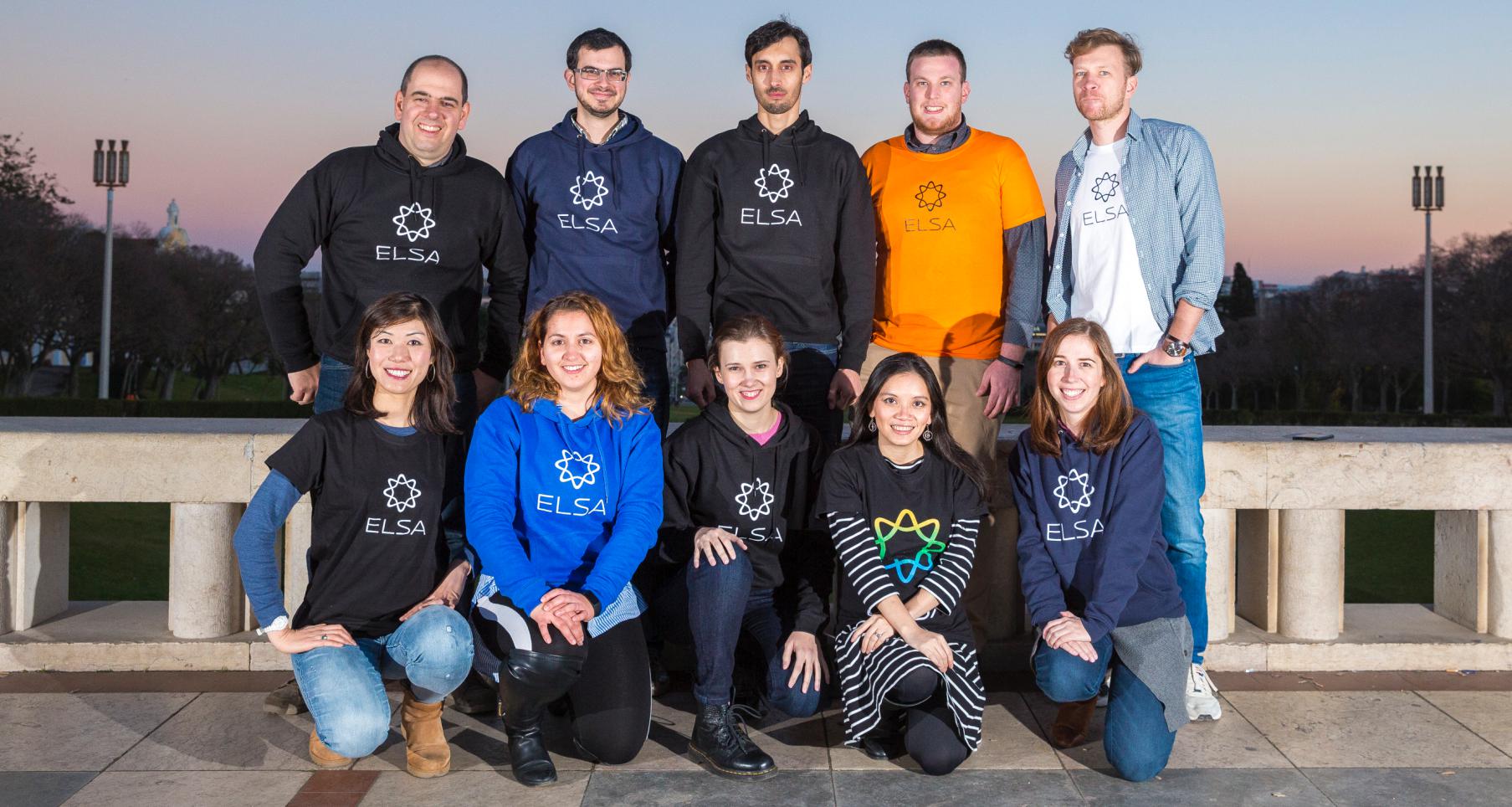
The Elsa team
Powered by WPeMatico
New VMware Kubernetes product comes courtesy of Heptio acquisition
VMware announced a new Kubernetes product today called VMware Essential PKS, which has been created from its acquisition of Heptio for $550 million at the end of last year.
VMware already had two flavors of Kubernetes, a fully managed cloud product and an enterprise version with all of the components, such as registry and network, pre-selected by VMware. What this new version does is provide a completely open version of Kubernetes where the customer can choose all the components, giving a flexible option for those who want it, according to Scott Buchanan, senior director of product marketing for cloud-native apps at VMware.
Buchanan said the new product comes directly from the approach that Heptio had taken to selling Kubernetes prior to the acquisition. “We’re introducing a new offering called VMware Essential PKS, and that offering is a packaging of the approach that Heptio took to market and that gained a lot of traction, and that approach is a natural complement to the other Kubernetes products in the VMware portfolio,” he explained.
Buchanan acknowledged that a large part of the market is going to go for the fully managed or fully configured approaches, but there is a subset of buyers that will want more choice in their Kubernetes implementation.
“Larger enterprises with more complex infrastructure want to have a very customized approach to how they build out their architecture. They don’t want to be integrated. They just want a foundation on which to build because the organizations are larger and more complex and they’re also more likely to have an internal DevOps or SREOps team to operate the platform on a day-to-day basis,” he explained.
While these organizations want flexibility, they also require more of a consultative approach to the sale. Heptio had a 40-person field service engineering team that came over in the acquisition, and VMware is in the process of scaling that team. These folks consult with the customer and help them select the different components that make up a Kubernetes installation to fit the needs of each organization.
Buchanan, who also came over in the acquisition, says that being part of VMware (which is part of the Dell family of companies) means they have several layers of sales with VMware, Pivotal and Dell all selling the product.
Heptio is the Kubernetes startup founded by Craig McLuckie and Joe Beda, the two men who helped develop the technology while they were at Google. Heptio was founded in 2016 and raised $33.5 million prior to the acquisition, according to Crunchbase data.
Powered by WPeMatico
Light is expanding from smartphone cameras to self-driving cars
This year’s MWC has been very much the beginning of a new phase for Light. Until now, the Palo Alto startup has been best known for its 16-lens DSLR competitor, an utterly fascinating, if not particularly practical device.
At this week’s show, however, we’re seeing a wholly different side of the company, one focused on partnerships. The event has seen the company announce three big alliances — Nokia device maker HMD, Chinese handset company Xiaomi and Sony, whose component manufacturing division will be teaming with Light to develop advanced modules for its near-near-ubiquitous camera hardware.
It’s a promising new start for the five-year-old company, and one that could help Light become a major player for mobile cameras going forward. In an interview, CEO Dave Grannan told TechCrunch that the trio of deals are just the beginning, with more partnerships planned for a 2019 announcement.
The Nokia 9 is the first product of these deals. Announced at the show this week, the five-camera limited-edition flagship is the product of a module that appeared last year, utilizing the array to create complex composite image similar to the sorts of RAW shots one takes with an SLR. It’s one of a number of different arrays that can utilize Light’s technology to build a better mobile multi-camera system.

“When we started Light five years ago, it wasn’t obvious that we would build a dedicated camera to begin with,” Grannan tells TechCrunch. “We realized that we really needed to build a reference device. Something to show the world what could be done. The idea from the first days was to prove to the world that it could be done and then start licensing our technology into other verticals starting with mobile phones.”
The proof-of-concept 16-camera system was always meant to be a limited-edition product, according to the executive, and it ultimately sold out of its initial run. That number was in the tens of thousands, according to Grannan, though he won’t go into any more detail beyond that.
He was happy to discuss the startup’s future, however. In July, Light raised a whopping $121 million, led by SoftBank, bringing its total funding up to $181 million. It was the CEO Masayoshi Son who suggested the next step in the company’s evolution, moving to autonomous vehicles. While Light would be a new entrant in a field that already involves dozens of focused startups, Grannan believes it can offer imaging systems at a fraction of the cost of current LIDAR rigs — at around $5,000 apiece.
Light also plans to expand into security cameras, helping systems better process the information they collect. For now, however, it’s focused on mobile. And in spite of a push toward a more software-focused approached to mobile camera improvement, Grannan believes that phone camera arrays will continue to expand — though perhaps not quite to the 16-camera level Light implemented on its own devices. Currently the company is working on a nine-camera module.
“Within a couple of years, three cameras will seem quaint,” Grannan says. “People are going to need this approach because it’s never good enough with imaging.”
Powered by WPeMatico




